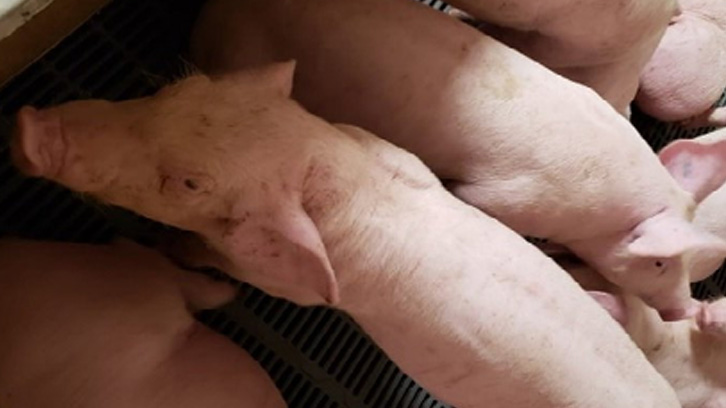Porcine circovirus 3: study on the diagnosis and definition of related diseases

Porcine circovirus 3 (PCV-3) was discovered in 2015 in the United States of America. Since then, it has been detected worldwide in pigs with different clinical signs, as well as in healthy pigs of different ages. Researchers from the Department of Animal Health and Anatomy of the UAB have studied the clinical, pathological, and virological data collected so far on the ability of the virus to infect, and propose two definitions of related pathologies and their diagnosis criteria.
Porcine circovirus 3 (PCV-3) was discovered in 2015 in United States of America (USA) by means of next-generation sequencing (NGS) methods. It was detected in pigs affected by digestive disorders, respiratory and neurological signs, cardiac and multisystemic inflammation, reproductive failure, and a porcine dermatitis and nephropathy syndrome (PDNS)-like condition. Since then, the virus has been detected worldwide in pigs displaying different clinical–pathological outcomes as well as in healthy pigs of different ages and countries. The objective of this review was to expose the evidence existing so far regarding PCV-3 as a pathogen able to cause disease in pigs and propose a case definition for the diagnosis of their associated disorders (PCV-3-AD).
The simple viral detection of a virus is not sufficient to establish a causal relationship between an infectious agent and a disease. Nevertheless, the presence of a particular pathogen within certain histopathological lesions of animals showing overt disease, when consistently detected, is probably the strongest evidence of potential disease causality. Recently, few studies have provided support of PCV-3 involvement in certain pathological conditions. Thus, PCV-3 viral genome has been detected from moderate to high amounts in tissues of fetuses and stillborn/weak-born piglets from cases of reproductive disorders. In addition, the virus has been found within lesions of pre- and post-weaning pigs displaying wasting, sudden death or neurological signs showing multisystemic inflammatory infiltrates, mainly at perivascular level. The most convincing proofs of disease association are those that demonstrate a clinical picture linked to multisystemic lymphoplasmacytic to lymphohistiocytic perivascular inflammation and presence of viral nucleic acid within these lesions.
Based on existing information of clinical, pathological, and virological data of PCV-3 infection cases, this paper proposes two major disease outcomes related with PCV-3-AD and their respective diagnostic criteria: PCV-3-reproductive disease (PCV-3-RD) in sows and fetuses/neonatal piglets, and PCV-3-systemic disease (PCV-3-SD) in pre- and post-weaning pigs. Such proposal is independent of the frequency, geographic distribution or economic impact of PCV-3-AD, which are rather unknown at present. While the PCV-3-SD in pre- and post-weaning pigs has been scarcely diagnosed at a global level to date, PCV-3-RD seems to occur more often. So far, however, the most frequent presentation of this viral infection is likely subclinical, and its potential health and economic impact on the swine industry worldwide is to be determined.
1) IRTA. Centre de Recerca en Sanitat Animal (CReSA, IRTA-UAB)
2) Department of Animal Medicine, Production and Health (MAPS), University of Padua
3) OIE Collaborating Centre for the Research and Control of Emerging and Re-emerging Swine Diseases in Europe (IRTA-CReSA)
4) UAB, Centre de Recerca en Sanitat Animal (CReSA, IRTA-UAB)
5) Departamento de Sanidad y Anatomía Animales, UAB
References
Viviane Saporiti,Giovanni Franzo,Marina Sibila,Joaquim Segalés. Porcine circovirus 3 (PCV-3) as a causal agent of disease in swine and a proposal of PCV-3 associated disease case definition.Transboundary and Emerging Diseases (2021). https://doi.org/10.1111/tbed.14204


